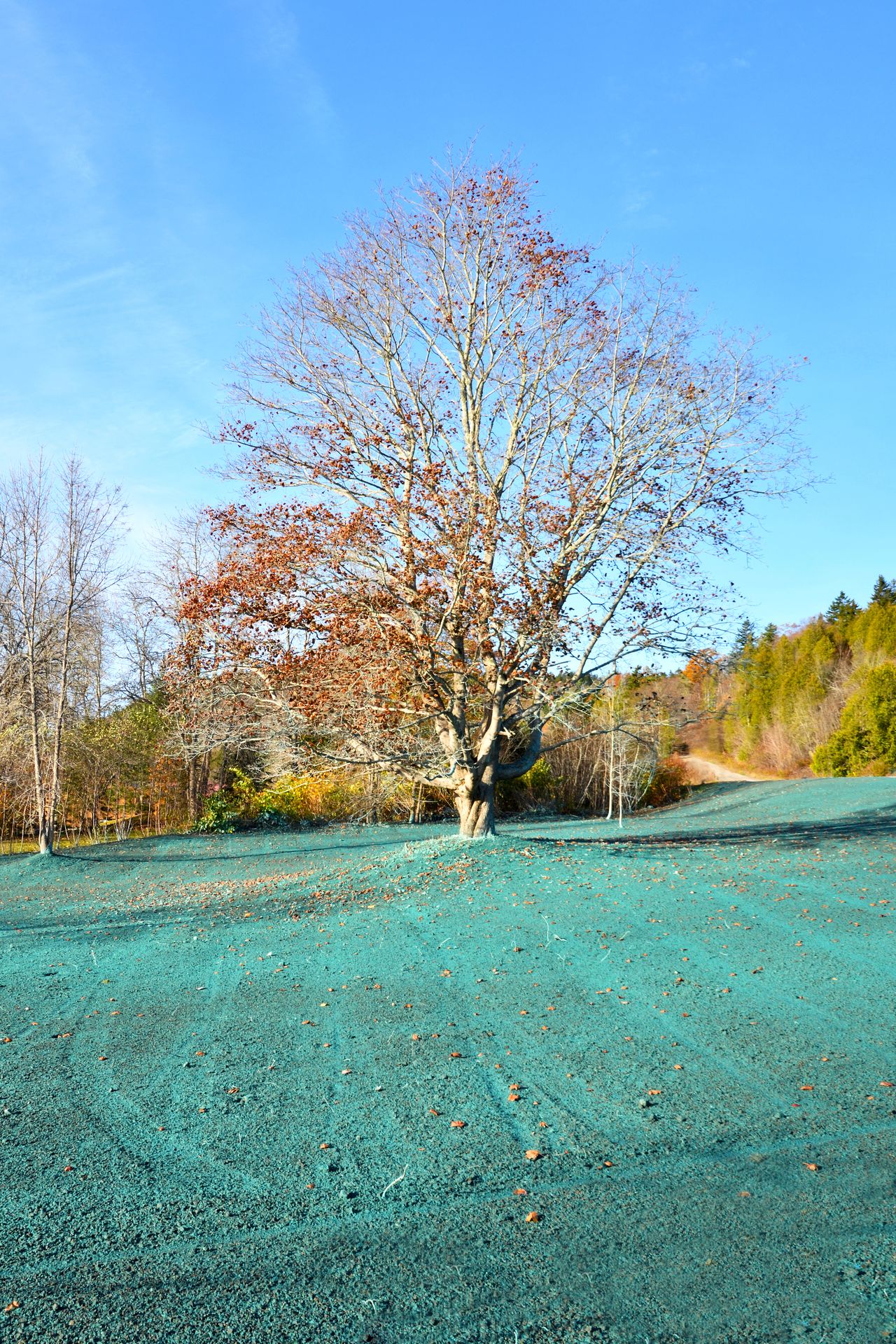Temporary seeding is essential to erosion control, especially on slopes and surfaces vulnerable to surface runoff.
Not only are seeding techniques generally cost-effective, but they also make the process of revitalizing impacted areas from construction or excavation simpler.
Among the various seeding options that construction companies and excavators can use to establish grass, hydroseeding and sod remain the most popular.
Hydroseeding is generally recommended for larger areas due to its lower costs and ease of maintenance, while sod is preferable for high-end residential or commercial use.
This guide will explore the benefits of hydroseeding and sod as they go head-to-head across several categories to determine which is right for your next project.
What Is Hydroseeding?
Hydroseeding is a seeding technique that uses a special machine to spread a slurry of seed, water, fertilizer, mulch, and a bonding agent over prepared soil. The mixture is specially formulated to protect seeds while promoting rapid germination and growth.
Hydroseeding is a particularly popular choice for:
- Large residential properties
- Roadside or highway projects
- Commercial landscapes
- Erosion-prone areas
Hydroseeding acts fast, establishes roots, and actively germinates within days of application to help cover up bare soil. This technique can be used to spread grass seeds and wildflowers.
What Is Sod?
Most people are familiar with sod as it’s a popular seeding technique used on residential properties.
Sod, also known as turf, is pre-grown grass that comes in rolls or slabs with a layer of soil and roots. It’s harvested from sod farms and then installed directly onto prepared ground. With the right installation and care, sod offers an instant green lawn and can be walked on relatively quickly.
Sod is used in a wide variety of projects, including:
- High-end residential homes
- Parks and athletic fields
- Fast-turnaround commercial properties
- Areas that need immediate curb appeal
While generally a little more labor-intensive than hydroseeding or spreading mulch, sod often delivers the best results in terms of quality and aesthetics.
Sod vs. Hydroseed: Side-by-Side Comparison
Hydroseeding and sod may be preferable over the other, depending on your project’s application, budget, and scale. Let’s compare them across several different factors to determine which is right for you.
Costs
Cost is one of the biggest deciding factors, especially on large-scale projects. Hydroseeding generally costs $0.10 to $0.22 per square foot, making it a much more affordable option than sod, which costs between $0.30 and $0.85 per square foot.
However, a special device is required to spread hydroseeds, which may add more to the cost, though it won’t total as much as sod for larger projects.,
Verdict: Hydroseeding is significantly more cost-effective for large properties, especially those exceeding half an acre.
Installation Time and Labor
In terms of labor, hydroseeding wings again. Hydroseed can be sprayed quickly over vast areas by a small crew. The application is fast, efficient, and ideal for hard-to-reach slopes or irregular terrain.
On the other hand, sod requires more labor, especially for larger surface areas. Each roll must be laid by hand in a precise, staggered pattern to achieve a desirable result.
Verdict: Hydroseeding wins for ease of application and reduced labor on large or complex sites.
Speed of Results
While both seeding techniques are considered quick, sod offers immediate green coverage. A fully sodded lawn can be used and walked on within 2 weeks.
Hydroseeding takes longer, as germination usually begins within 5–10 days, but full coverage may take 4–8 weeks, depending on weather, soil conditions, and grass type.
Verdict: Sod is the clear winner if instant results are a must.
Root Establishment and Long-Term Performance
Hydroseeded grasses grow in place, which often means deeper root systems that adapt better to the local soil and climate. Over time, they can be healthier and more drought-tolerant.
Sod is grown in different soil (often sandy), then transferred. It takes time for the roots to establish in the new environment, and mismatched soils can cause long-term stress if not properly prepared.
Verdict: Hydroseed tends to produce a more resilient, better-adapted lawn in the long run.
Erosion Control and Slope Coverage
Both hydroseeding and sod are considered excellent erosion control BMPs. However, hydroseeding generally binds to the soil and works better long-term on sloped or uneven terrain. Sod can slip or dry out on steep slopes if not anchored properly. It’s also more vulnerable to erosion until it’s fully rooted.
Verdict: Hydroseed is the better choice for erosion control and slope stabilization.
Which Seeding Technique Is Better for Large Projects?
Hydroseeding is usually the wiser investment for large commercial, municipal, or residential projects. It offers excellent coverage, lower cost, and a more adaptable lawn in the long run.
Sod, while faster, comes with a higher price tag and may not be practical for acre-sized properties unless instant results are critical (such as for model homes or event spaces).
Ultimately, the best seeding choice depends on your priorities:
| Factor | Preferred Option |
| Budget-conscious | Hydroseed |
| Immediate results | Sod |
| Custom seed mix | Hydroseed |
| Large, open areas | Hydroseed |
| Erosion control | Hydroseed |
| High-traffic areas | Sod |
| Steep slopes | Hydroseed |
| Short timelines | Sod |
| Long-term health | Hydroseed |
FAQs
Can you mix hydroseed and sod on the same property?
Absolutely. Many large-scale projects use sod in high-traffic or high-visibility areas (like entrances or walkways) and hydroseed in larger, less critical spaces. It’s a cost-effective strategy for getting the best of both worlds.
Does sod require fertilizer?
Yes. Although sod looks complete when installed, it still benefits from a starter fertilizer and regular watering. After root establishment, sod should follow a standard fertilization schedule to stay healthy.
Can I walk on hydroseeded areas?
It’s best to avoid foot traffic on hydroseeded areas for at least 4 to 6 weeks. Early disruption can prevent seeds from germinating and interfere with uniform growth.

